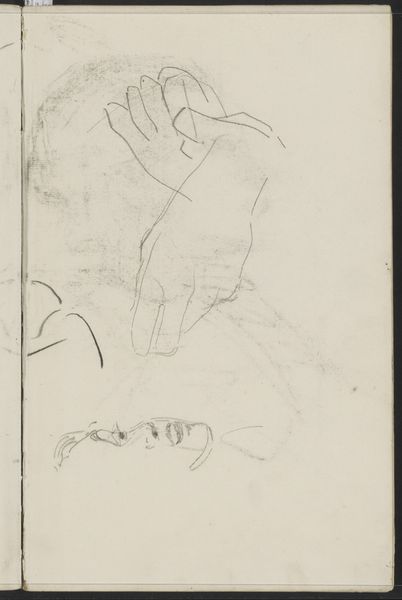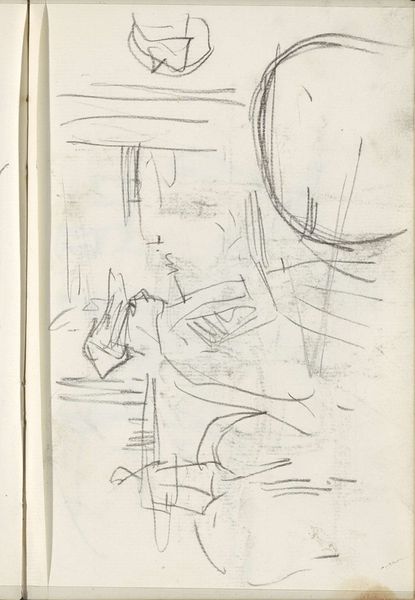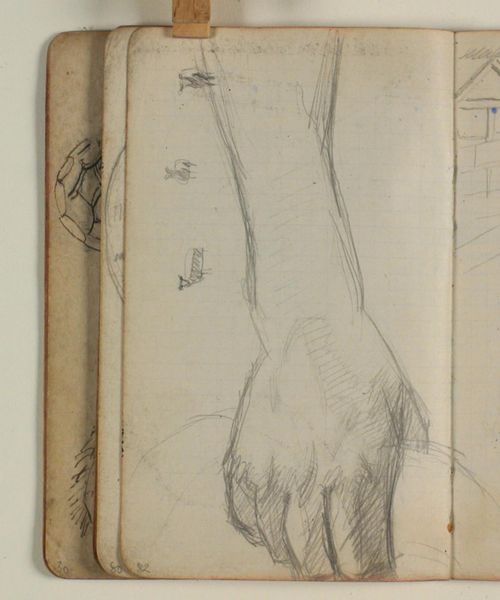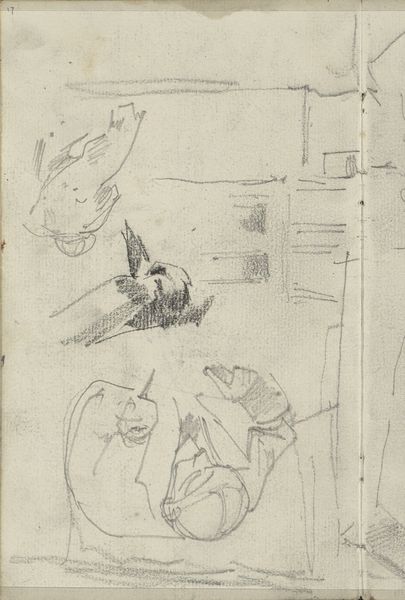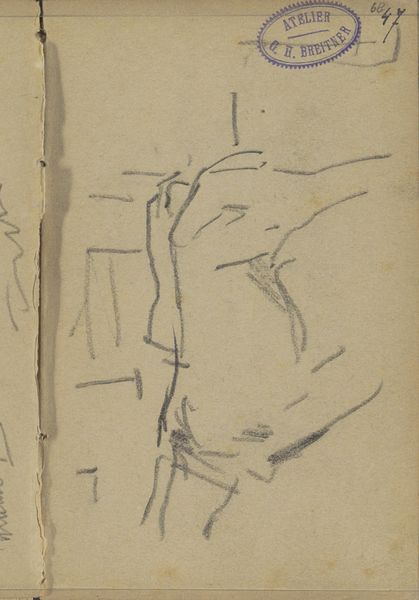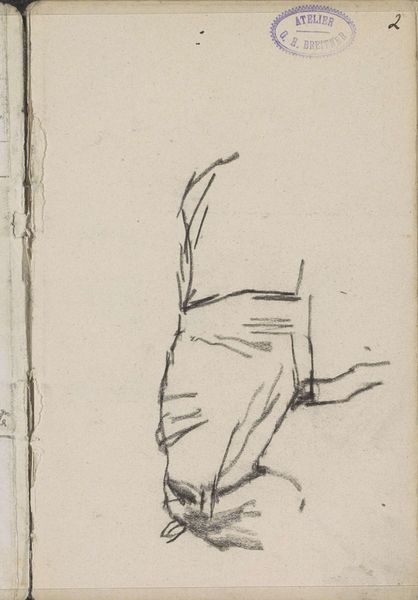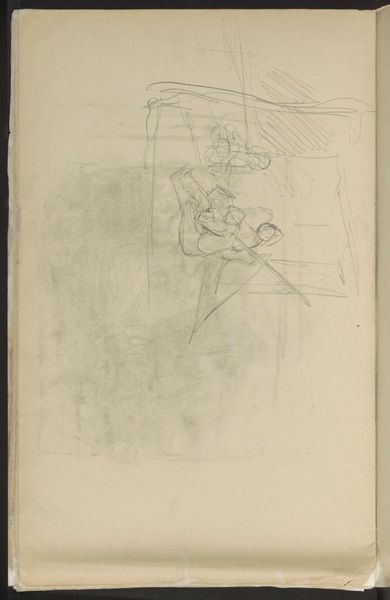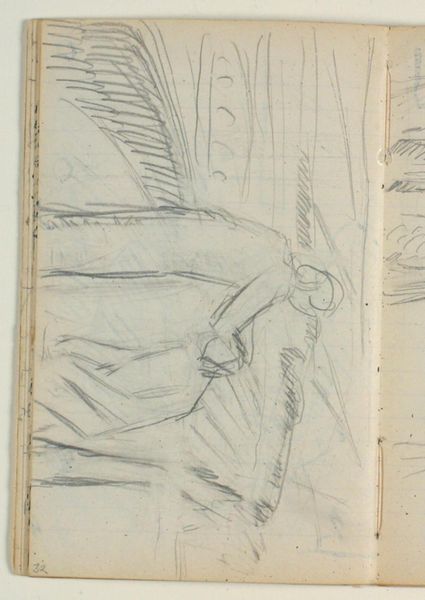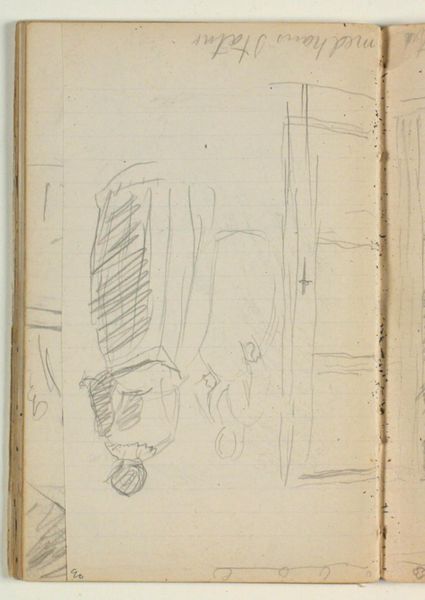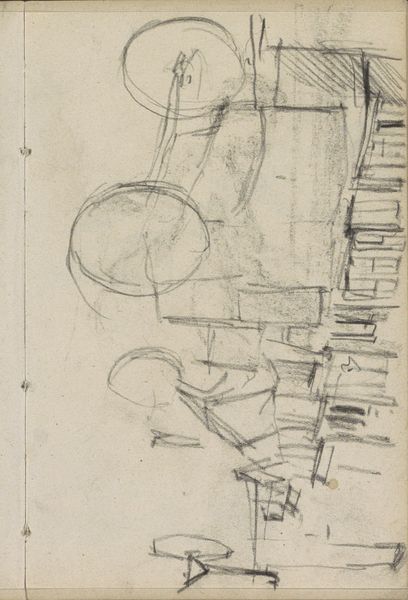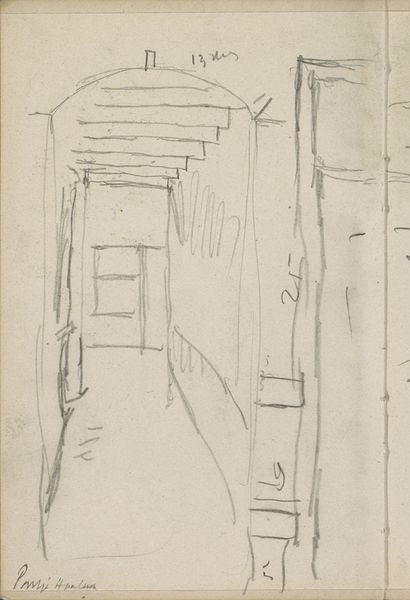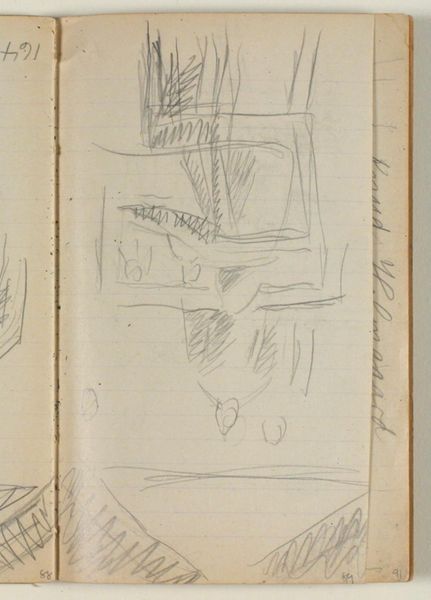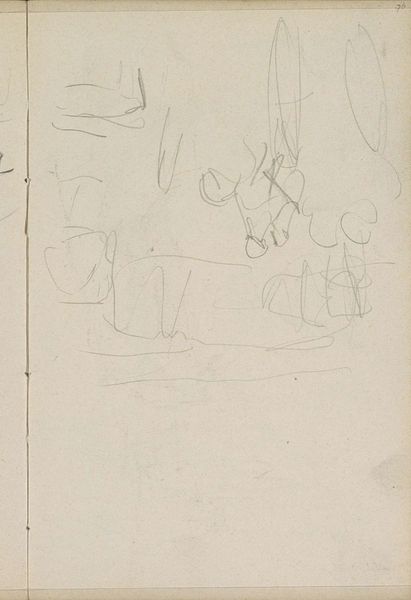
drawing, pencil, graphite
#
portrait
#
drawing
#
amateur sketch
#
toned paper
#
light pencil work
#
pencil sketch
#
sketch book
#
personal sketchbook
#
sketchwork
#
detailed observational sketch
#
pencil
#
graphite
#
sketchbook drawing
#
sketchbook art
#
realism
Dimensions: 161 mm (height) x 96 mm (width) (bladmaal)
Editor: So, this is "Studie af en fod og en del af en mur"–Study of a foot and part of a wall–created by Niels Larsen Stevns between 1906 and 1910. It's a graphite drawing on toned paper, and it looks like a page torn right out of a sketchbook. It has such an informal, personal quality. What do you see in this seemingly simple sketch? Curator: Well, beyond the apparent realism, I find it fascinating how Stevns juxtaposes the organic form of the foot with the rigid geometry of the wall. Think of the foot as a symbol of movement, of journey, groundedness even. The wall, in contrast, represents structure, confinement, perhaps history itself, bearing witness. Editor: I hadn't considered the wall as a historical marker. Curator: Look at the way the artist renders the stones, almost like building blocks of memory. What does it tell us when we juxtapose organic forms against angular, constructed ones? Are we contrasting nature and civilization, freedom and constraint? The symbol of the foot strikes me most of all, since, like a pillar, or foundation, it supports our every moment of life. And it connects us to the past with every step into the future. Editor: That's a powerful idea – the foot as a connection to both our past and future. So even a quick sketch can hold so much symbolic weight. Curator: Exactly! And notice the placement of the foot relative to the wall, at the lower edge of the paper. How does this spatial arrangement impact our interpretation of its symbolic intent? Consider also what appears cropped off. Editor: So it really makes you wonder about what other fragments of ideas, stories or symbolic meaning might surround that initial image, off the page! Curator: Precisely! Art helps reveal just how the invisible shapes what we do see.
Comments
No comments
Be the first to comment and join the conversation on the ultimate creative platform.

